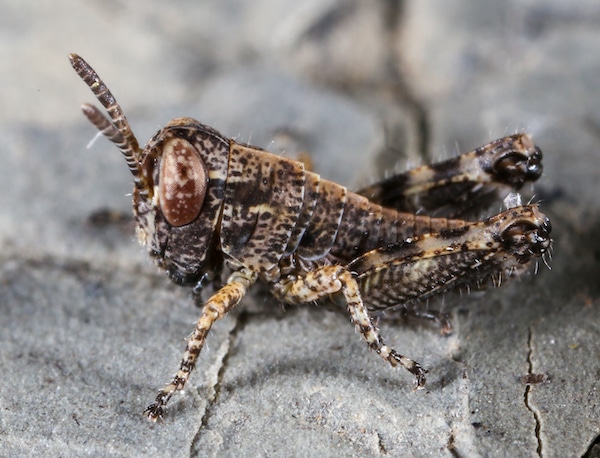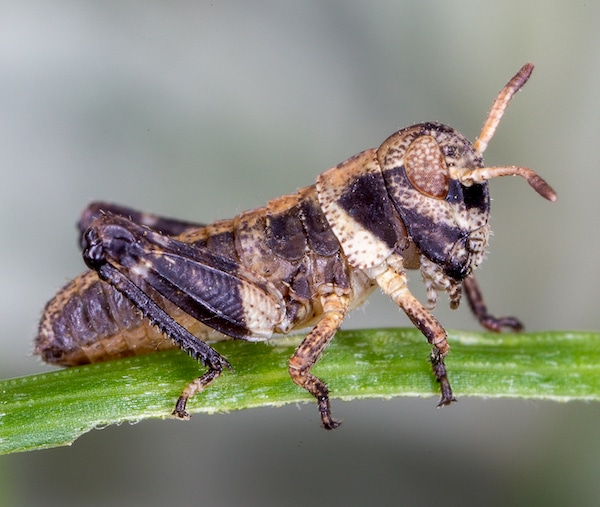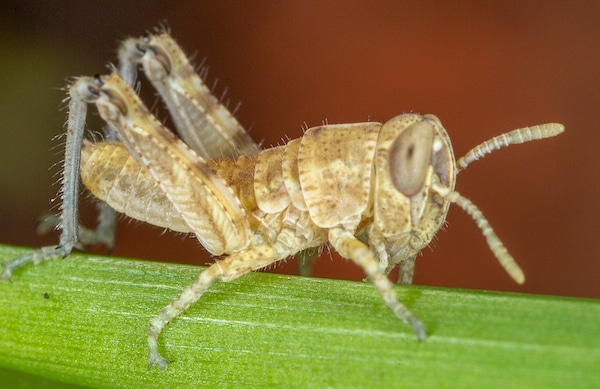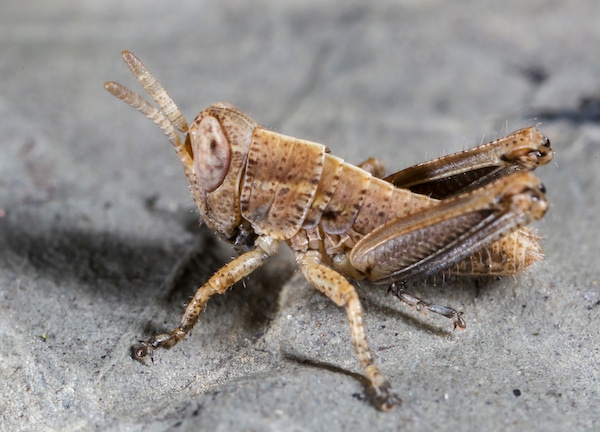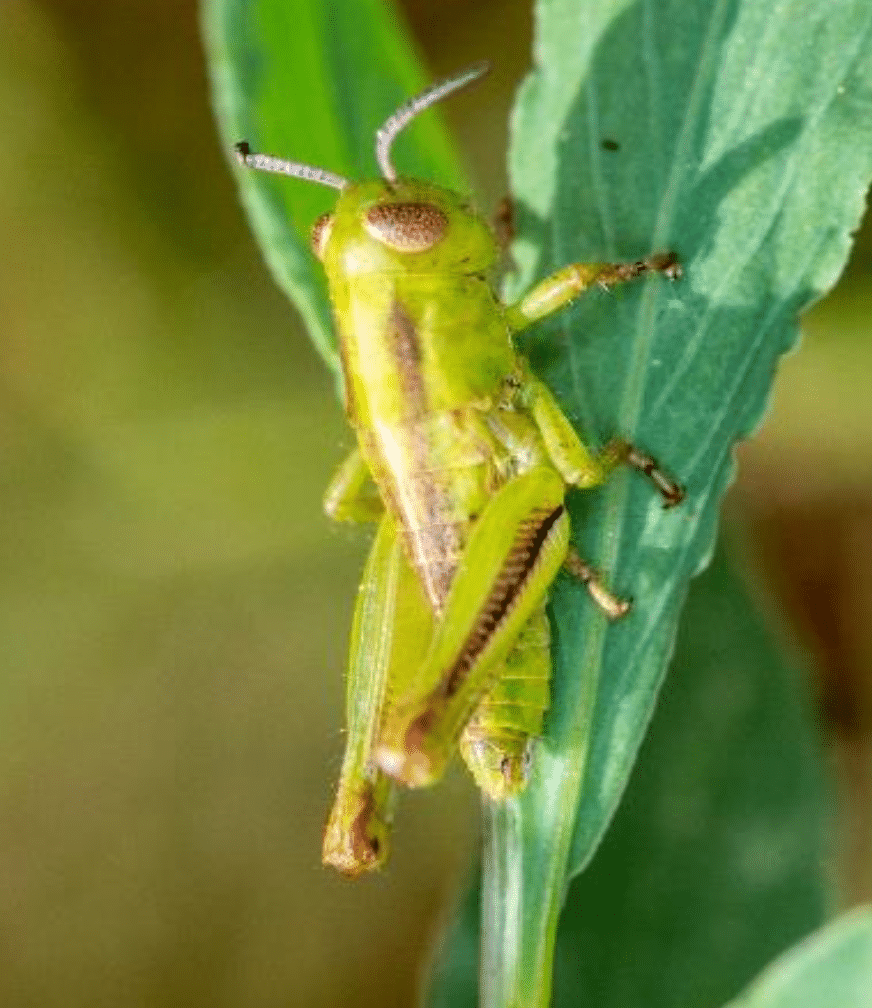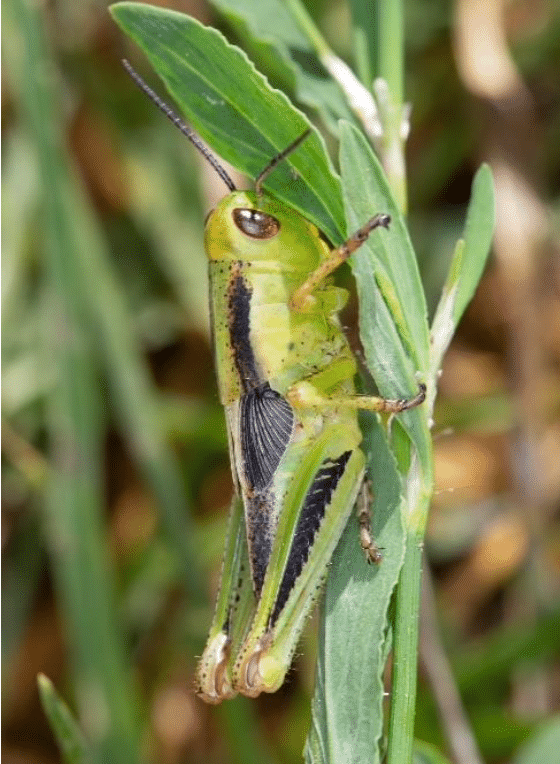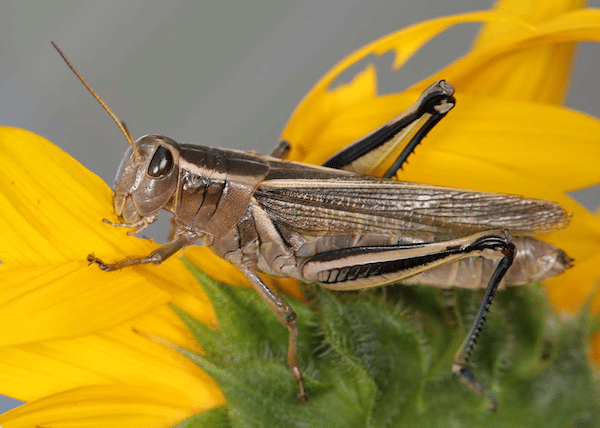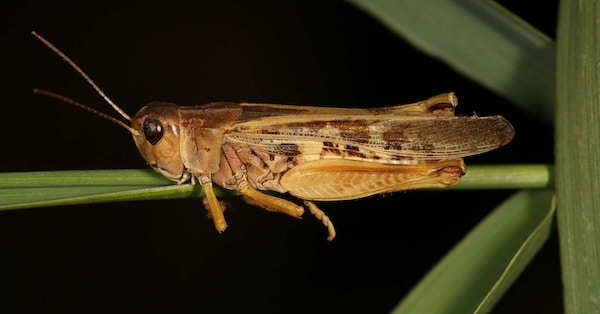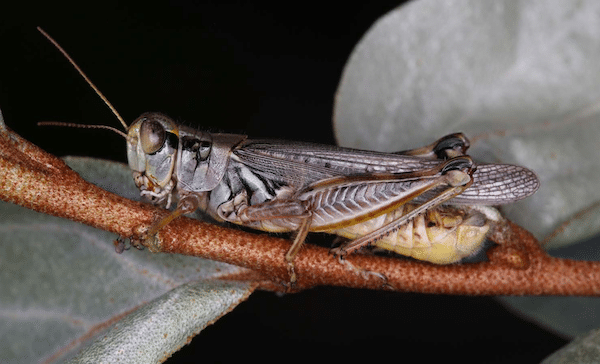Grasshoppers, particularly the two-striped, clearwing, migratory and Packard’s species, can pose a significant threat to canola crops on the Canadian Prairies. This article describes the steps for grasshopper management in canola.
Identify the pest
The primary grasshopper pest species on the Prairies, the two-striped grasshopper, prefers broadleaf plants and can cause significant damage to canola. The clearwing grasshopper prefers grasses and cereal crops, but will feed on canola. The other two major grasshopper pest species, Packard’s and migratory, will consume a wide array of crops.
Damage usually starts around field margins as grasshoppers hatch and move in from egg-laying sites in ditches, pastures and preferred crops. Scouting and control, if necessary, should start in field-margin areas. Grasshoppers could eventually move through a canola field, especially if food is scarce.
Weather
Grasshoppers, like many other insects, tend to eat more and grow faster in hot, dry weather. This weather also limits fungal infection.
Rain promotes rapid plant growth and will reduce the economic risk from grasshoppers. Robust plants can suffer more damage without a yield loss. High humidity also increases fungal infection of grasshoppers, which can greatly reduce local populations.
Stages
The major pest grasshoppers have one generation per year on the Canadian Prairies. Grasshoppers lay eggs in late summer. Eggs overwinter and then hatch between mid-May and late June, depending on the accumulation of heat. Cool conditions delay the hatch.
Grasshoppers grow through five nymphal stages, or “instars,” before reaching the adult stage. Growth from hatch to adulthood takes just over a month in warm temperatures and close to two months in cool temperatures.

Economic spray thresholds
Look for feeding. If a site has numerous grasshoppers, but the canola field shows no damage, the site may contain a species that does not typically feed on canola. There are many such species.
If you see crop feeding from grasshoppers, the current action threshold for grasshoppers in canola is 8-12 adults (or near adults) per square metre.
New thresholds
These nominal thresholds are under review, and the Prairie Pest Monitoring Network posted new numbers in 2024:
- 12-14 fifth instar nymphs and adults per square metre of crop is suitable for average or above average growing conditions.
- 30-45 nymphs per square metre has been proposed to remove the threat early when grasshoppers are small and easy to target. This also allows for a larger suite of insecticides. Group 3A (synthetic pyrethroids) are not recommended for adult grasshoppers.
- Ditch thresholds of 24-50 fifth instars and adults and 50-75 nymphs per square metre are in discussion. With a ditch threshold, farmers could consider an early targeted spray before pest grasshoppers move into fields.
Plant condition affects thresholds. A lower threshold of 5-7 fifth instars and adults per square metre may be a better target for hot and dry conditions where grasshoppers thrive and crop growth suffers.
How to count grasshoppers
Prairie Pest Monitoring Network recommends this grasshopper monitoring protocol:
- Mark off a distance of 50 metres with flags on the road or field margin.
- Walk along that 50 metre distance counting grasshoppers within a one metre square in front of you. A preferred option is to take separate counts for each one by 10 metre segment, providing five counts per 50 metre stretch. Make some disturbance with your feet to encourage any grasshoppers to jump. The grasshoppers per square metre will be the average of all your counts.
- Do this in the ditch and again inside the crop. Repeat a little farther down the road. And possibly again in the middle of the field to see if grasshoppers are confined to field margins.
- To confirm grasshopper growth stages and species, use a sweep net to capture a few so you can look at them. Contact a provincial or local extension expert if you want help with identification. Most grasshopper species are not crop pests, so confirm crop feeding before making a spray decision. Grasshopper nymphs also look like leafhoppers.
Insecticide application tips
It is generally easier to control earlier instars before they grow into adults.
A Manitoba Agriculture factsheet, Grasshoppers: Identification, monitoring and management, indicates that insecticide applications are more effective and lower cost when applied after eggs hatch and while nymphs are still concentrated in their breeding areas.
However, waiting until the majority are in the third and fourth instar stages is a more accurate indicator of a problem. A lot can happen to early instars (ex. disease outbreaks, predation, weather) before they reach the third instar stage and start to cause damage.
Farmers have several insecticide control options for grasshoppers in canola. Insecticide options for 2024
Avoid spraying on hot, hot days. At temperatures above 25°C, grasshoppers can metabolize insecticide more quickly, and it can be less effective. Warm, not hot, days result in slower metabolization and better control. Always consult the insecticide label for details prior to applying.
One option, EcoBran, is particularly effective on younger grasshoppers within field margins.
More…
- Canola Encyclopedia chapter on grasshoppers
- Prairie Pest Monitoring Network risk maps and monitoring protocols on grasshoppers

